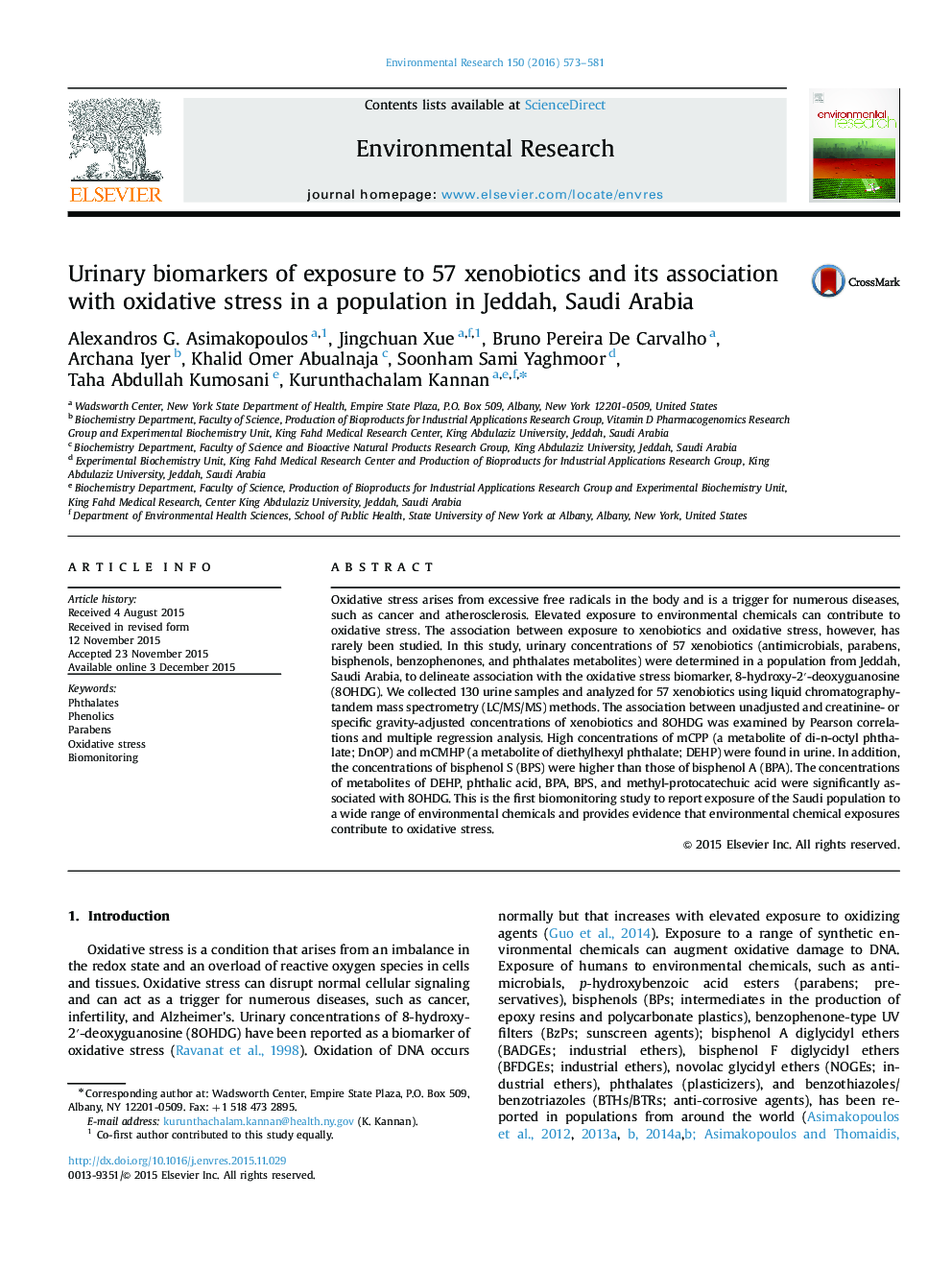| Article ID | Journal | Published Year | Pages | File Type |
|---|---|---|---|---|
| 6351087 | Environmental Research | 2016 | 9 Pages |
â¢7 xenobiotic compounds were analyzed in urine from Saudi population.â¢Some phthalates metabolites were found at elevated levels.â¢Bisphenol S concentrations were higher than those of bisphenol A.â¢Eight xenobiotics were associated with a biomarker of oxidative stress.
Oxidative stress arises from excessive free radicals in the body and is a trigger for numerous diseases, such as cancer and atherosclerosis. Elevated exposure to environmental chemicals can contribute to oxidative stress. The association between exposure to xenobiotics and oxidative stress, however, has rarely been studied. In this study, urinary concentrations of 57 xenobiotics (antimicrobials, parabens, bisphenols, benzophenones, and phthalates metabolites) were determined in a population from Jeddah, Saudi Arabia, to delineate association with the oxidative stress biomarker, 8-hydroxy-2â²-deoxyguanosine (8OHDG). We collected 130 urine samples and analyzed for 57 xenobiotics using liquid chromatography-tandem mass spectrometry (LC/MS/MS) methods. The association between unadjusted and creatinine- or specific gravity-adjusted concentrations of xenobiotics and 8OHDG was examined by Pearson correlations and multiple regression analysis. High concentrations of mCPP (a metabolite of di-n-octyl phthalate; DnOP) and mCMHP (a metabolite of diethylhexyl phthalate; DEHP) were found in urine. In addition, the concentrations of bisphenol S (BPS) were higher than those of bisphenol A (BPA). The concentrations of metabolites of DEHP, phthalic acid, BPA, BPS, and methyl-protocatechuic acid were significantly associated with 8OHDG. This is the first biomonitoring study to report exposure of the Saudi population to a wide range of environmental chemicals and provides evidence that environmental chemical exposures contribute to oxidative stress.
